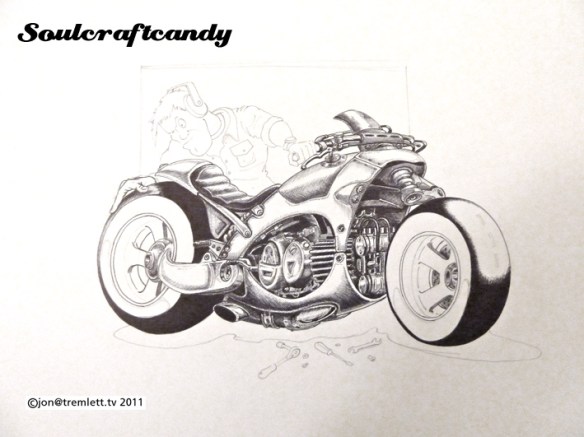
The inescapable fact of the matter when you’re making drawings like these is that ink can be a mightily unforgivable medium. Once you’ve made that mark on the paper there is invariably no going back. You can’t erase it. I remember there being such a thing as an erasable biro pen many years ago but, I also remember that it wasn’t really so and always left some kind of witness behind it and the eraser used scuffed up the surface of the paper. Not that great really when you’re after a perfect image. But I digress. There are advantages however to putting oneself in the situation where you can’t really afford to make any mistakes. I’ve always found that it tends to focus ones concentration on the drawing and where the marks and lines go. Over time this also builds a confidence in oneself which allows you to be much more relaxed during the creative process. There is a joy to be had in “knowing” what you’re doing and why you’re doing it. It makes it all feel very natural and in some way takes you closer to that point of flow that I’ve mentioned before.
There are many agonising moments during the making of a drawing, but the most can often be the point where you’re just about to make the very first marks on the page. I know I’m not alone in suffering that dreadful emptiness when faced with a blank sheet of paper. As a kid sat in art class the blank page presented you with so much possibility that you almost froze in the face of its intimidating emptiness. As you mature creatively this diminishes for sure but it can pop up occasionally to test you. Thankfully with a pencilled outline already on the page I don’t suffer this fate at present but I do take one last long stare at the bare image before that first biro contact. One is still faced with many choices one has to make even at this point but to combat any unsureity I employ a couple of simple strategies to get me by.
The sketches in this post demonstrate my simplest approach. I start in the middle of the drawing and work outwards. There is a practical reason behind this as much as anything. By starting in the centre I can move around the piece I’m working on very easily without running the risk of picking up “wet” ink on my hand and then promptly smearing it all around the page. I always use a loose sheet of paper to lean on to avoid this but it is so easy to forget to move it as you go and make a mess. As the drawing progresses I then divide it up into areas and attack those one at a time. So for example I’ll do the engine, then the surrounding bodywork etc. Wheels are always done as a pair and I leave the rendering of the figure until after I’ve competed the bike. the final step is any shadow and ground detail and then finally the horizon or background, if there is one.
These two drawings have taken shape in parallel. Again it’s another strategy I use to help me along, working on more than one thing at a time. Despite the obvious advantage of giving you two finished drawings at the same time what this really does is help we out when I get stuck. It keeps the flow going when I run into a set of details I’m perhaps not sure about, and rather than sit idly there letting my mind and focus wander I can reach for the other drawing and keep going while my subconscious mulls over how I’m going to deal with the problem. A happy consequence can also be that something done on one drawing provides a solution for the other. A kind of win win thing.
These two will be finished very soon.







